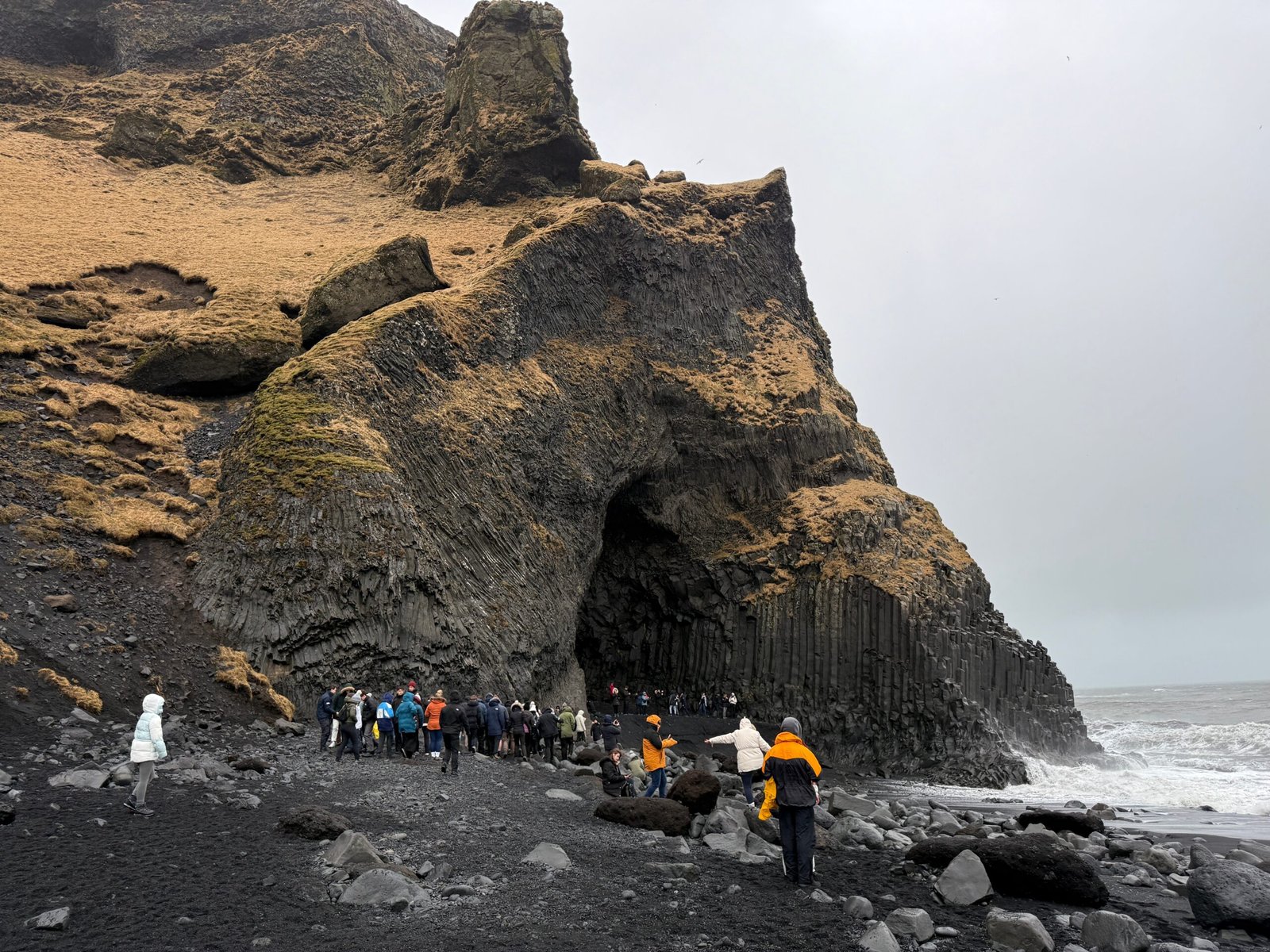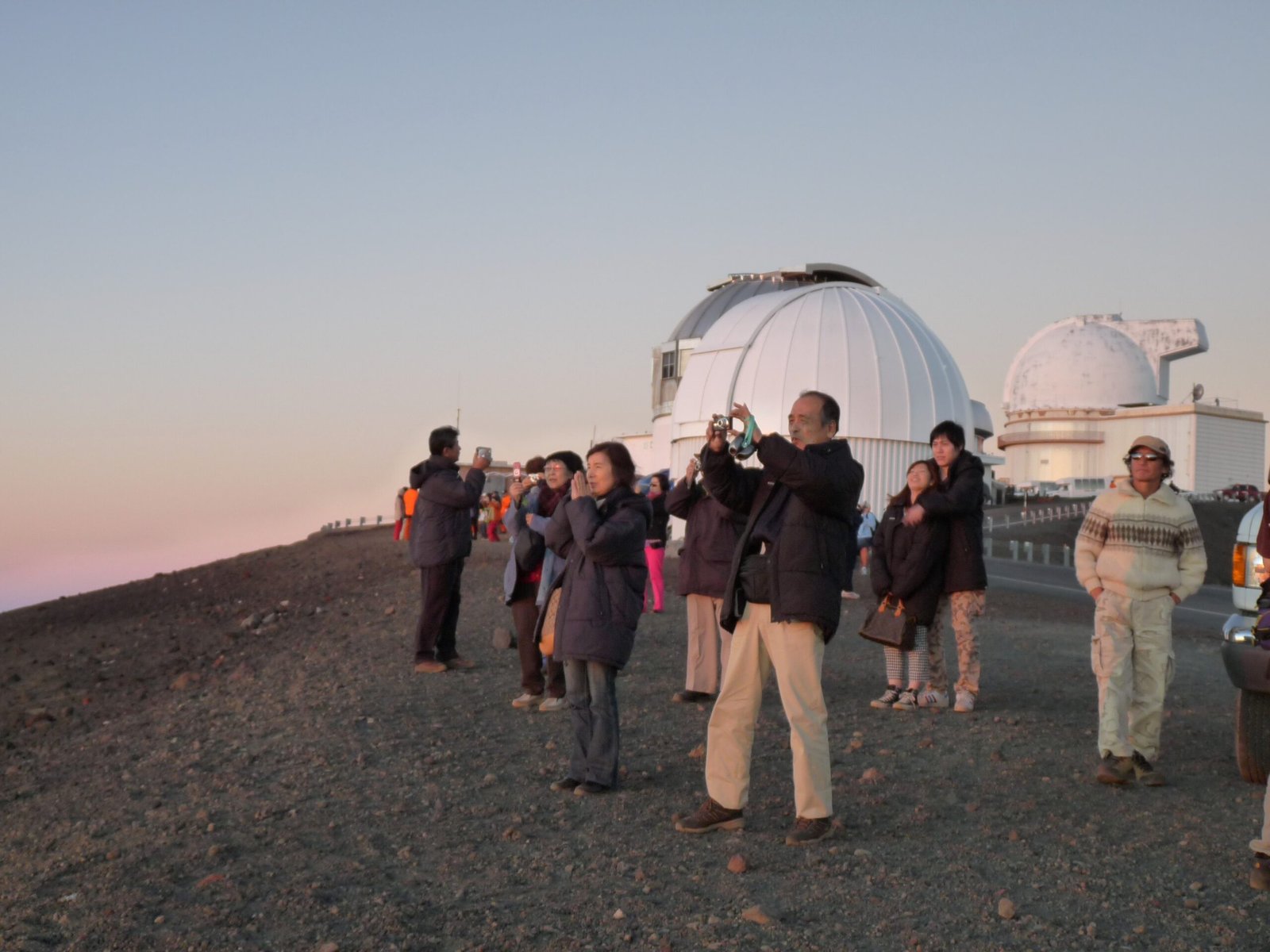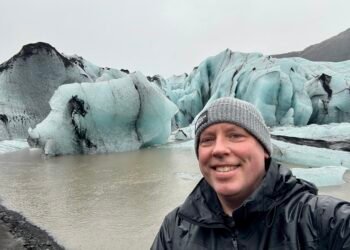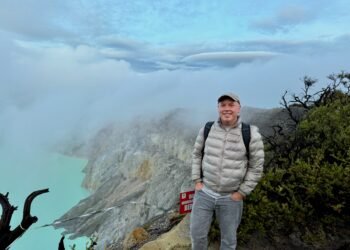I’ve always believed traveling can be more than just ticking boxes off a bucket list—it’s about delving into the remarkable processes that shape our planet, uncovering the stories woven into its history, and appreciating the diverse cultures that flourish around us. In this article, I share how my curiosity led me to explore not only fascinating geological sites but also stargaze from volcanic peaks, immerse myself in local lore, and stand in awe at the edge of a receding glacier. By highlighting essential tips, captivating personal anecdotes, incredible views, and sustainable practices, I hope to inspire you to embrace science travel—where understanding the science behind each place elevates every journey into a profound lesson about our world.
Science Travel: A New Way to Explore the World
Ever since my first journey to Mauna Kea in Hawaii—standing atop a volcano at sunset, gazing at planets from the Visitor Centre—I realized travel could be about more than sightseeing. It could be about understanding how and why our incredible world functions. Since then, science travel transformed my adventures into meaningful explorations, from hiking the rugged cliffs of England’s Seven Sisters while hunting fossils to experiencing the sheer awe of glaciers like Mer de Glace in France.
What Exactly is Science Travel?
Science travel is a form of travel that combines exploration and a passion for discovery with a curiosity for scientific phenomena, natural wonders, and the pursuit of knowledge. It’s about visiting places where science, nature, and history converge, allowing travelers to experience and understand the world in a deeper, more informed way. Unlike typical tourism, science travel is an active pursuit of knowledge, offering opportunities to explore any natural wonder or place through the lens of a scientific discipline—whether it’s marveling at the dramatic white chalk cliffs near Belle Tout Lighthouse in southern England (formed over millions of years and rich with ancient marine fossils), witnessing a total solar eclipse in Fredericton, Canada, or snorkeling the vibrant reefs of Coron, Philippines, to be awed by an abundance of marine life. Each journey deepens understanding, connecting travelers intimately to nature, history, and science.

While science travel is often perceived as an expensive, luxurious endeavor—such as expeditions to remote locations like Antarctica—it doesn’t have to be. In fact, science travel can start right in your own backyard. A local granite quarry near my hometown in New Brunswick, Canada, offers insights into geology, glacial shaping from the last ice age, ecological succession, and historical mining methods. Science travel is ultimately about developing a new appreciation for the everyday wonders around us, as well as exploring intriguing scientific phenomena globally.
Who is a Science Traveler?
Science travelers are innately curious individuals who approach travel as an educational and enriching experience. They look beyond traditional sightseeing to actively engage with and understand their surroundings. Whether exploring the geological wonders of Australia’s Uluru, unraveling archaeological mysteries at Machu Picchu in Peru, or contemplating engineering marvels like the Hoover Dam, science travelers share a passion for lifelong learning.

They can be students eager to complement their academic studies, educators seeking real-world examples, scientists broadening their field knowledge, or simply lifelong learners who want to deepen their connection with the world. Many science travelers also team up with local experts—park rangers, research station staff, or field guides—to gain valuable insights or even to participate in ongoing studies.
Key Aspects of Science Travel
One of the most captivating elements of science travel is the opportunity to witness natural wonders firsthand. These are places shaped by powerful geological, meteorological, or ecological processes, such as geysers erupting in Iceland, volcanoes spewing lava in Hawaii, or glaciers carving valleys on the slopes of Mont Blanc in France. Such locations reveal the dynamic and ever-changing nature of our planet, offering visitors a chance to observe and appreciate the forces that shape our world.
But natural wonders aren’t the only draw—science travelers can also discover destinations with significant scientific or engineering value, adding a whole new layer to their explorations.
Another essential aspect of science travel is visiting sites with significant scientific or engineering value. These can include museums, observatories, research centers, and historic locations where groundbreaking discoveries took place—but also places where ancient ingenuity comes to life. For example, the Great Pyramid of Giza in Egypt and Machu Picchu in Peru are prime examples of sophisticated engineering achieved by early civilizations. Their construction methods showcase a remarkable understanding of mathematics, astronomy, and architecture—long before modern technology. Closer to our own era, standing beneath the awe-inspiring blue whale skeleton in London’s Natural History Museum powerfully illustrates Earth’s evolutionary marvels, while touring the CERN laboratory in Switzerland, home to the world’s largest particle accelerator, offers an extraordinary glimpse into cutting-edge physics. Similarly, exploring the Smithsonian National Air and Space Museum allows travelers to trace humanity’s quest for flight and space exploration.

Experiential learning is a fundamental part of science travel. Rather than passively observing, visitors are encouraged to engage with their surroundings through hands-on activities, guided tours, and interactive exhibits. Whether it’s analyzing fossils at a natural history museum or interpreting the advanced architectural techniques of an ancient civilization, this active participation fosters a deeper understanding and personal connection to the science being explored.
Personal discovery also plays a vital role in science travel. It’s about blending factual insights with the individual stories and experiences that make each journey unique. For example, reflecting on the sheer power of a geyser after feeling its spray or marveling at the precision engineering of the Great Pyramid while standing before its colossal stones. These moments of realization make science travel not just informative but deeply personal and memorable.

Lastly, cultural integration enriches the science travel experience by revealing how scientific phenomena are woven into local traditions and ways of life. In many regions, natural wonders, groundbreaking technology, and ancient engineering are celebrated through stories, rituals, or community events. Understanding these cultural perspectives offers a more nuanced appreciation of how science and society intertwine.
Overall, these aspects—natural wonders, significant landmarks, active participation, personal discovery, and cultural context—deepen engagement with every destination and set science travel apart from ordinary tourism.
Science Travel Hotspots
Science travel can take you to some of the most fascinating and unique places on Earth, where natural phenomena, scientific discovery, and human ingenuity intersect. Whether your passion lies in geology, biology, physics, space exploration, or ecology, there are countless destinations where you can immerse yourself in the wonders of science. Here are some captivating examples of science travel hotspots that blend adventure and education—sure to spark your curiosity:
- Iceland’s Geysers and Volcanoes: A prime destination for witnessing geothermal activity and the dramatic effects of tectonic shifts. Visitors can marvel at geysers shooting boiling water into the sky and explore the volcanic landscapes that define this island’s unique geology. I’ve been fortunate enough to visit Iceland myself, and the sheer variety of geological marvels—from erupting geysers to black-sand beaches—was absolutely astonishing. It remains high on my list of must-see places for any traveler intrigued by our planet’s raw power.
- Galápagos Islands: A living laboratory of evolution, these islands offer a rare opportunity to observe unique wildlife that inspired Charles Darwin’s groundbreaking theories. The diversity of species and the islands’ isolation make it a must-visit for anyone fascinated by natural history.
- CERN in Switzerland: Dive into the world of cutting-edge physics by visiting the Large Hadron Collider, the world’s most powerful particle accelerator. Tours at CERN allow visitors to glimpse the forefront of scientific discovery and explore the mysteries of the universe.
- Space Centers: Places like NASA’s Kennedy Space Center in Florida offer an inspiring look at humanity’s quest to reach beyond our planet. From rocket launches to interactive exhibits, these centers celebrate the achievements and future of space exploration.
- Great Barrier Reef, Australia: As the world’s largest coral reef system, this UNESCO biosphere reserve offers an unparalleled opportunity to explore marine biodiversity. Snorkeling and diving reveal vibrant coral ecosystems teeming with life, while conservation programs highlight efforts to protect this natural wonder from the impacts of climate change and human activity.
These destinations not only offer incredible sights but also deepen our understanding of the natural and scientific forces that shape our world. Through science travel, you can satisfy your curiosity while gaining a richer appreciation of the planet and our place within it. For more travel ideas and inspiration, visit our Science Travel Blog.
Inspiring Personal Anecdotes
While most of my adventures have been fueled by curiosity, a few particularly memorable trips stand out on my journey to becoming a science traveler. These experiences truly allowed me to reflect on the scientific elements of my explorations. I’m sure every science traveler has similar adventures—moments when they became so immersed in the science of a place that it left a lasting impact.
One of my most significant moments as a science traveler was my adventure to Mauna Kea in Hawaii. It was a watershed experience that solidified my passion for combining travel with scientific discovery. The Big Island of Hawaii offered an abundance of incredible natural wonders, but the journey to the summit of Mauna Kea was the crowning moment. Seeing and hiking on a volcano for the first time, feeling pumice stone in my hand and examining its bubbly texture, witnessing an unforgettable sunset, and finally being treated to an astronomical display as the stars appeared—culminating in seeing the polar ice caps on Mars—was nothing short of magical. That experience made me realize that I wanted to travel not just to see Instagram-friendly sights but to understand what made each place unique and special from a scientific perspective.

Another memorable experience was my recent hike to the summit of Mount Katahdin, just a few hours from my hometown. The day-long trek offered incredible insights into ice-age shaping, natural rock weathering, and diverse wildlife. After the trip, I researched how magma cooling deep within the Earth’s crust formed the mountain’s granite rock and how glacial movements thousands of years ago carved its profile—creating microclimates that support different vegetation at varying elevations. Learning about these processes added a new layer of appreciation to the experience.
One more trip that stands out was visiting Mount Bromo in Indonesia—a volcano I’d dreamed of visiting for years. Standing on the crater’s edge, watching the sunrise over it, feeling the rumble of gases released from its depths, and witnessing the unique ecology in the surrounding caldera was astonishing. Post-visit research further deepened my appreciation as I explored topics ranging from volcanic activity to the local folklore that surrounds the mountain. It was an eye-opening experience, blending the raw power of nature with cultural narratives.
Each anecdote highlights how diving into the scientific elements of a place can elevate an already amazing journey—transforming it into a lifelong memory brimming with wonder.
Planning an Itinerary with Scientific Depth
So you’d like to embark on your first science travel adventure? To get started, decide what you want to see or what sparks your curiosity the most. Then, do your research and build yourself an itinerary that allows you to see the things that interest you and can fit within your time and budget. Sometimes we might be comfortable to develop our own itinerary, however if not, there are usually tour operators that can help with this, albeit at a higher cost. Reach out to tour operators or local scientists who might invite travelers to field stations or research facilities. This extra planning rewards you with enriched knowledge and a sense of contribution to scientific discovery.
Science Travel Activities
Science travel adventures do not all need to be grand adventures and even take place in your local area. Here are some examples of things you can do to engage in science travel activities.
- Birdwatching: Observe native bird species in local parks. Record your sightings in citizen science apps.
- Fossil Hunting: Explore beaches or riverbanks known for fossil deposits. Always check regulations to protect important sites.
- Geological Exploration: Investigate quarries, caves, or rock formations. Document findings with photos or notes.
- Local Biology: Study wildlife and plant life in marshes, forests, or coastal shorelines. Pay attention to seasonal changes.
- Seashore Biology: Explore tidal pools to observe intertidal organisms and learn how they adapt to changing water levels.
- Mountain Hiking: Observe geology, ecology, and weather phenomena at higher elevations. Look for evidence of past glacial activity or volcanic eruptions in the rock layers.
Practical Tips for Science Travelers
Looking to embark on your first science travel adventure? Here are some tips to get you started.
- Start Close to Home: Begin with local geological formations, nature reserves, or bird-watching areas. Even familiar environments can hide scientific wonders waiting to be uncovered.
- Do Your Research: To get the most out of a science travel excursion, do a little research beforehand. Trust me, you’ll encounter plenty of fascinating things that will spark your curiosity. Being able to identify these ahead of time will help you make the most of your visit.
- Keep It Affordable: Choose nearby sites, participate in citizen science projects, or join guided hikes. Many nature reserves and environmental organizations welcome volunteers to support ongoing research, offering budget-friendly opportunities for scientific exploration.
- Recommended Gear: Here are some essentials that can come in handy during your science travels:
- Geology: Rock hammer, magnifying glass, sturdy boots.
- Volcanology: Respirator or gas mask (for sulfur-rich environments), protective eyewear, hiking poles, and layered clothing suitable for high elevations and rapid weather changes.
- Astronomy: Binoculars, star charts, red-light headlamp.
- Biology: Field guides, notebook, camera.
- Marine Biology: Snorkeling gear, waterproof notebook, underwater camera, identification guide.
- Helpful Apps: Google Maps, Google Earth, ChatGPT, Stellarium, iNaturalist, Rockd.
- Books & Online Resources: National Geographic guides, Smithsonian publications, Wikipedia, Reddit, Tripadvisor, and local geological society websites.
- Check Local Conditions and Advisories: Before heading out—especially for remote or extreme environments—look into weather forecasts, park regulations, and any safety advisories to ensure a safe journey.
With the right preparation and mindset, your science travel journey can be both exciting and enriching. Start small, stay curious, and embrace the adventure.

Environmental Impact and Sustainability
Science travel supports responsible tourism by promoting education and awareness. Travelers become advocates for conservation, adopting sustainable practices to preserve sites for future generations. This dedication extends beyond the trip itself, as many science travelers continue supporting environmental causes once they return home. Here are some tips for reducing your impact:
- Follow “leave no trace” principles and stay on designated trails.
- Support local conservation efforts by volunteering or donating.
- Use reusable containers and reduce single-use plastics.
- Respect local wildlife by not feeding or disturbing animals and plants.
By integrating sustainable practices into your travels, you not only minimize your environmental footprint but also help protect the very places that inspire your sense of wonder. Embracing responsible science travel ensures that these remarkable destinations remain preserved for future explorers and continues to foster a deeper connection between travelers and the natural world.

Why Science Travel Matters
At its core, science travel fosters a deeper bond with the natural world and encourages us to be stewards of our planet. By immersing ourselves in geological marvels, witnessing celestial wonders, or documenting marine life, we become part of a broader movement to appreciate Earth’s processes and protect them. In an era of rapid environmental change, greater awareness of our planet’s fragility can inspire real-world action, from local habitat restoration to global policy discussions. Science travel isn’t just about personal enrichment—it’s about creating a community of informed travelers who value discovery and conservation.

Join the Journey
Science travel has profoundly shaped my perspective, from traversing trails in Zion National Park and exploring wonders like Machu Picchu, to observing the geological marvels of Australia’s Twelve Apostles Marine National Park. Each new destination expands my understanding of Earth’s processes and fosters greater respect for the intricate balance of our planet.
Whether you’re new to travel or an experienced adventurer, science travel offers extraordinary pathways for exploration. Let’s investigate, appreciate, and protect our extraordinary world together. By turning every trip into a quest for knowledge, you’ll not only enrich your own experiences but also help preserve the natural wonders that make our planet unique.









